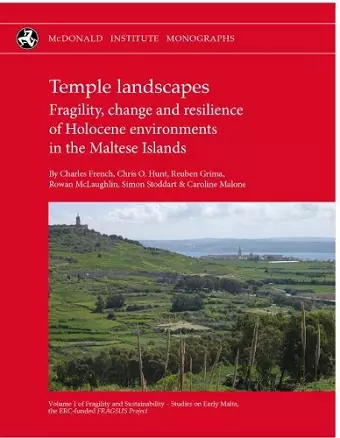Temple Landscapes
Fragility, change and resilience of Holocene environments in the Maltese Islands
Charles French editor Caroline Malone editor Chris OHunt editor Reuben Grima editor Rowan McLaughlin editor
Format:Hardback
Publisher:McDonald Institute for Archaeological Research
Published:31st Dec '20
Should be back in stock very soon

The ERC-funded FRAGSUS Project (Fragility and sustainability in small island environments: adaptation, cultural change and collapse in prehistory, 2013-18), led by Caroline Malone (Queens University Belfast) has explored issues of environmental fragility and Neolithic social resilience and sustainability during the Holocene period in the Maltese Islands. This, the first volume of three, presents the palaeo-environmental story of early Maltese landscapes.
The project employed a programme of high-resolution chronological and stratigraphic investigations of the valley systems on Malta and Gozo. Buried deposits extracted through coring and geoarchaeological study yielded rich and chronologically controlled data that allow an important new understanding of environmental change in the islands. The study combined AMS radiocarbon and OSL chronologies with detailed palynological, molluscan and geoarchaeological analyses. These enable environmental reconstruction of prehistoric landscapes and the changing resources exploited by the islanders between the seventh and second millennia bc.
The interdisciplinary studies combined with excavated economic and environmental materials from archaeological sites allows Temple landscapes to examine the dramatic and damaging impacts made by the first farming communities on the islands' soil and resources. The project reveals the remarkable resilience of the soil-vegetational system of the island landscapes, as well as the adaptations made by Neolithic communities to harness their productivity, in the face of climatic change and inexorable soil erosion. Neolithic people evidently understood how to maintain soil fertility and cope with the inherently unstable changing landscapes of Malta. In contrast, second millennium bc Bronze Age societies failed to adapt effectively to the long-term aridifying trend so clearly highlighted in the soil and vegetation record. This failure led to severe and irreversible erosion and very different and short-lived socio-economic systems across the Maltese islands.
ISBN: 9781902937984
Dimensions: unknown
Weight: unknown
484 pages